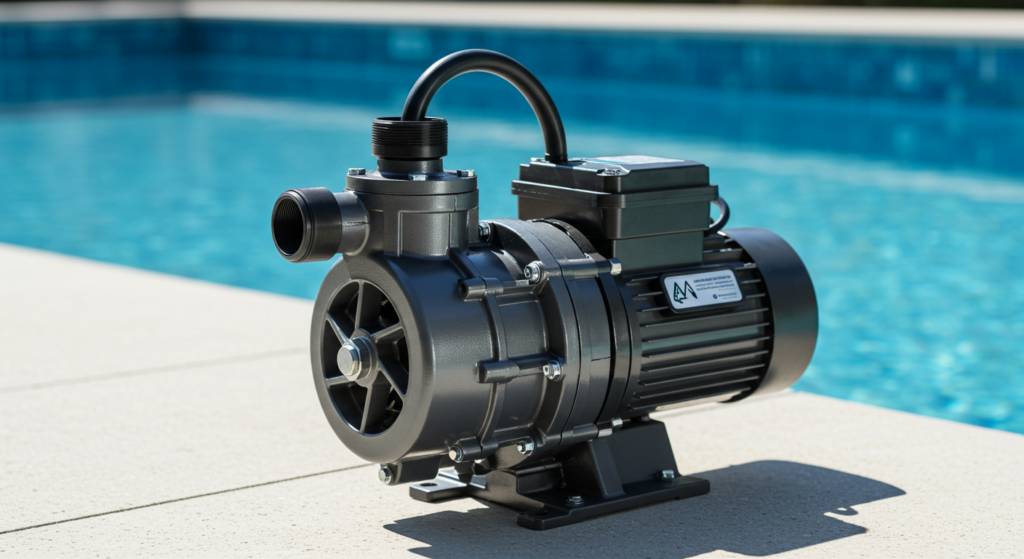Have you ever wondered how an AODD pump works? AODD stands for Air-Operated Double Diaphragm, and it’s a type of pump that uses compressed air to move fluids.
The pump consists of two chambers, each with a diaphragm that moves up and down. As one diaphragm is pushed down by air pressure, it displaces the fluid, while the other diaphragm suctions more fluid into the pump.

What is AODD Pump
AODD (Air-Operated Double Diaphragm) pumps are positive displacement pumps that utilize compressed air to drive two flexible diaphragms, alternately creating suction and discharge strokes. These pumps are capable of handling a wide range of fluids, including viscous, shear-sensitive, and even abrasive liquids.
Components of AODD Pump
- Air Distribution System: Controls the flow of compressed air to the diaphragms. Includes the air valve and air chambers.
- Diaphragms: The heart of the pump, flexing back and forth to create suction and discharge strokes. Connected by a common shaft.
- Check Valves: Ensure unidirectional flow of the pumped fluid. Can be ball valves or flap valves.
- Fluid Chambers: Fill with pumped liquid during the suction stroke and discharge it during the discharge stroke. Located on either side of the diaphragms.
- Inlet and Discharge Manifolds: Connect the fluid chambers to the suction and discharge ports.
How Do AODD Pumps Work
1. Suction stroke
During the suction stroke of an AODD pump, compressed air is directed to one of the air chambers, causing the diaphragm to flex outward. This creates a negative pressure in the corresponding liquid chamber, allowing atmospheric pressure to force fluid through the suction port and past the open ball valve.
The suction stroke fills the liquid chamber with the pumped fluid, while the opposite diaphragm is pushed toward the center of the pump, displacing the fluid through the discharge port.
2. Discharge stroke
During the discharge stroke, compressed air is directed to the opposite air chamber, causing the diaphragm to move and force the fluid out of the pump. The discharge ball valve opens, allowing the fluid to exit through the discharge port.
As the diaphragm moves, it creates positive pressure in the liquid chamber, which closes the suction ball valve and prevents backflow. The discharge stroke continues until the diaphragm reaches its maximum displacement, at which point the air valve switches, and the cycle repeats.
3. Repeat for Continuous Flow
The AODD pump continues to repeat the process of alternating between the two diaphragms, creating a continuous flow of fluid. As one diaphragm completes its discharge stroke, the other diaphragm simultaneously performs its suction stroke, ensuring a constant flow of liquid through the pump.
Advantages of AODD Pumps
- Self-Priming and Run Dry Capability: AODD pumps can self-prime and run dry without damage, handling abrasive, viscous, and shear-sensitive fluids.
- Seal-Less Design: Ensures better containment, eliminating the need for mechanical seals and reducing maintenance.
- Portable and Simple Construction: Easy maintenance and quick repairs, minimizing downtime.
- Variable Flow and Pressure Control: Enables precise adjustment for specific process requirements, suitable for various applications.
- Safety in Hazardous Environments: Operate without electricity, handling dangerous chemicals without risk of sparks or leaks.
- Suction Lift Capabilities: Reliable for transferring and processing a wide range of materials.
Disadvantages of AODD Pumps
- Pulsating flow: AODD pumps create a pulsating flow due to the reciprocating action of the diaphragms, which may not be suitable for applications needing a constant flow rate.
- Air consumption: These pumps rely on compressed air, leading to high air consumption and increased energy costs, especially in continuous operation.
- Noise levels: The rapid cycling of diaphragms and exhaust of compressed air can generate significant noise, requiring additional noise reduction measures in certain environments.
- Limited head pressure: AODD pumps typically have limited ability to generate high head pressures compared to other types of pumps, like centrifugal or piston pumps.
- Maintenance requirements: The moving parts, such as diaphragms, ball valves, and air distribution systems, require regular maintenance to ensure optimal performance and prevent failure.
- Pulsation dampeners: Pulsation dampeners may be necessary to minimize pulsating flow effects on downstream equipment or processes, adding to the overall cost and complexity.
Applications Across Industries
- Chemical Processing and Transfer
- Water and Wastewater Treatment
- Mining, Oil, and Gas
- Pharmaceutical and Food Processing
- Paints, Coatings, and Inks
- Ceramics and Pulp & Paper
Selecting the Right AODD Pump
Fluid Properties
Consider the viscosity, abrasiveness, and corrosiveness of the fluid. These factors determine the pump’s internal components and materials.
Flow Rate and Pressure
Evaluate the required flow rate and discharge pressure. Match these specifications to the pump’s capabilities for optimal performance.
Air Consumption and Efficiency
Assess the pump’s air consumption and overall efficiency.
Materials of Construction
Select appropriate materials based on the application environment and fluid characteristics.
Diaphragm and Check Valve Options
Choose suitable diaphragm and check valve materials. These components directly impact pump performance and maintenance requirements.
In Conclusion
AODD pumps offer versatile, reliable solutions for various industries. Their unique design allows for efficient fluid transfer in challenging environments.
For more information on implementing AODD pumps in your operations, contact a pump specialist today.






